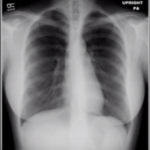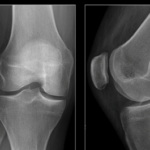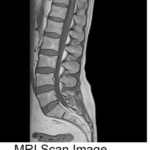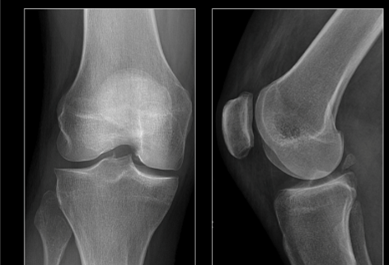Do I Really Need to Get an X-Ray or MRI?
by Casey Rightmyer, DPT
AzOPT Prescott Doctor of Physical Therapy
Are you confused about imaging? Your doctor suggested an X-Ray or MRI based on your symptoms. But what does each analyze and how do they help understand your condition? Let’s break down the most common types of imaging:
Radiographs
A 
 radiograph or an x-ray is most commonly used to examine bones. X-rays can identify fractures, arthritis, tumors, and infections. X-rays cannot be used to assess damage to soft tissue like muscles, tendons, or ligaments. X-ray beams will show different structures in your body dependent on the density. For example, bones are very dense and will appear white on the image, while air in the lungs will appear black.
radiograph or an x-ray is most commonly used to examine bones. X-rays can identify fractures, arthritis, tumors, and infections. X-rays cannot be used to assess damage to soft tissue like muscles, tendons, or ligaments. X-ray beams will show different structures in your body dependent on the density. For example, bones are very dense and will appear white on the image, while air in the lungs will appear black.
Common conditions: Arthritis of the knee, spine, shoulder, hip, joint dislocation, spinal degeneration, broken bone
MRI (Magnetic Resonance Imaging)
 An MRI has the ability to show a far more detailed picture of your body compared to an x-ray. If you have a suspected ligament or tendon damage, your doctor may prescribe an MRI to gain further understanding of your injury. MRI’s are commonly used to examine the spine. It can reveal degeneration of the segments or a herniated disc. An MRI is selected for variety of conditions, but mostly to assess soft tissue in the body (muscles, tendons, ligaments, nerves, organs, and blood vessels).
An MRI has the ability to show a far more detailed picture of your body compared to an x-ray. If you have a suspected ligament or tendon damage, your doctor may prescribe an MRI to gain further understanding of your injury. MRI’s are commonly used to examine the spine. It can reveal degeneration of the segments or a herniated disc. An MRI is selected for variety of conditions, but mostly to assess soft tissue in the body (muscles, tendons, ligaments, nerves, organs, and blood vessels).
Common conditions: Rotator cuff, spine, ligaments of the knee (ACL, MCL, LCL, PCL), meniscus, disc herniation
Is imaging really necessary for me to get better?
Not always! Often times, imaging is more “nice to know” versus a necessity. Obviously, this is not applicable to all conditions. For example, when a patient arrives at their evaluation with signs and symptoms pointing to a ruptured ACL, our physical therapists will immediately refer the patient to their doctor for more imaging. Conversely, when a patient presents with persistent back pain for an unknown cause with no red flag symptoms, imaging is typically not necessary. Let me explain:
 A systematic review by Brinjikji at el. found huge numbers of subjects whose MRI revealed some sort of degeneration in the spine, but exhibited no symptoms. Just because your MRI shows that you have a disc herniation doesn’t mean that it’s the reason for your pain. Your physical therapist will use symptom reproduction and reduction to guide their treatment and identify the root cause of your pain.
A systematic review by Brinjikji at el. found huge numbers of subjects whose MRI revealed some sort of degeneration in the spine, but exhibited no symptoms. Just because your MRI shows that you have a disc herniation doesn’t mean that it’s the reason for your pain. Your physical therapist will use symptom reproduction and reduction to guide their treatment and identify the root cause of your pain.
There is a time and a place for imaging, but remember it isn’t always necessary. Before you spend the extra out-of-pocket expense on unnecessary imaging, consult with your physical therapist. Our knowledge and expertise can help guide you to answer your questions and create a personalized treatment plan designed to get you back to all the activities you need and love the most.







